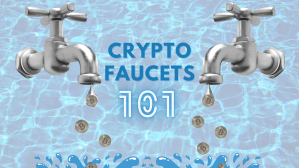Again and Again Cd Room Opner Virus

Purchasing certificates of deposit (CDs), along with the process of laddering them, have historically been investment strategies favored by people who are on the lookout for lower-risk investing opportunities that can help them earn income over time. Whether you're new to investing and want to learn the ropes, are looking to diversify your portfolio or want to invest across the board in a relatively safe option, CDs are financial products that are worth looking into.
As you start to get into CD investing, you'll notice that building a high-yield CD ladder is often an effective strategy to use to maximize your returns. Before you head to your local bank and purchase a CD, however, it's helpful to learn what a high-yield CD ladder is, what its pros and cons are, and how to build one.
What Are CDs and Why Would You Ladder Them?

Investment CDs are products that you can buy at just about any bank or credit union. The idea behind a CD is that you deposit a certain amount of money and agree to leave it untouched for a predetermined amount of time, or the "term."
In return, the bank pays you a better interest rate — which you earn on the amount you deposit into the CD — than you'd earn if you put your money into a regular savings account. This interest rate you earn is called the annual percentage yield (APY). Once the CD matures, meaning it reaches the end of the term, you can redeem it and withdraw the funds you initially deposited, along with the APY interest the bank owes you.
The process is simple enough, but it's important to do ample research when it comes to deciding which financial institution you want to purchase CDs from. The interest rate of the average CD can vary considerably depending on the bank or other institution where you decide to invest.
If you're looking to invest in CDs long-term — or to continually earn higher rates on your savings — then building a CD ladder is a smart way to go. Different CDs require different time commitments, and the longer you agree to leave your money untouched, the higher your APY will typically be — leading to a more optimal rate of return. The downside is that CD interest rates can fluctuate as time goes by, so your earnings may not always be as substantial as you anticipate.
If you choose to invest a lump sum into a five-year CD now, you may miss out on the chance to earn a better APY elsewhere in the meantime. But if you choose to put your money into shorter-term CDs now, you'll miss out on the better APY that a longer-term CD offers. Building a CD ladder is an effective way to split the difference between these two outcomes and capitalize on both at the same time.
How Does a CD Ladder Work?

Building a high-yield CD ladder involves investing in a variety of CDs with different terms rather than putting all of your money into a single CD. This allows you to enjoy the higher-yield benefits of long-term CDs and the versatility of short-term CDs at the same time.
Say that you have $5,000 to invest. Rather than choosing between putting it all into a long- or short-term CD, you can instead divide up your funds and invest them equally in five CDs of different lengths. This is the process of laddering, and you might build your five-CD ladder by investing your money as follows:
- $1,000 in a one-year CD (lowest APY)
- $1,000 in a two-year CD
- $1,000 in a three-year CD
- $1,000 in a four-year CD
- $1,000 in a five-year CD (highest APY)
As you can see, one CD matures every year over the five-year period. One of the most important ideas behind building a high yield CDs ladder comes into play a year after you've made your investment. As your first one-year CD matures, you take the money and the interest it earned and buy a new five-year CD.
If you repeat the same process every year, you'll eventually end up with five five-year CDs, with one set to expire every year for the next five years. This way, you'll enjoy the high-yielding benefits of longer-term CDs but still have access to a fifth of your growing funds each year. By arranging the ladder so at least one CD matures each year, you'll have the chance to shop around for better APY rates, change your investing tactics, use the money to cover an emergency expense or make another purchase.
The Pros and Cons of the CD Ladder Approach

Like every form of investing, building a CD ladder comes with its own set of pros and cons. Here's a quick review of the upsides of investing in a CD ladder:
- CDs are very low-risk investments.
- By using the ladder approach, you can ultimately build a series of high-yield CDs with cascading maturity dates, which prevents you from tying all your money up until a certain date.
- Some of the highest-yield CDs can give you a better return than simply leaving your money in a savings account would.
It's important to note that there are downsides to investing in CD ladders and CDs in general. Perhaps no better investment strategy proves the old adage "small risk, small reward" better than the CD, especially recently. Many of even the highest-yielding CDs of mid-2021 offer APYs of less than 1%, even for five-year CDs. Other downsides of CD ladder investing include the following:
- CD rates are impacted by the Federal Reserve and show few signs of going up until around 2023.
- Currently, some of the best high-yield savings accounts have APYs that are just as good as or better than the yield from a one-year CD.
Is CD Investing Right for You?

Considering the pros and cons of CD laddering should give you a pretty good idea of whether this is a sound investment strategy for you. If you're still on the fence, here are a few other things to consider.
You'll want to make sure you fully understand any penalties for cashing out your CD early at whatever financial institution you do business with. The fact that there are generally fees associated with early payouts can be either a pro or a con. On the one hand, they can force you to stay disciplined and ride out your investment for the long haul. On the other hand, however, emergencies do happen, and you may need to weather the loss to access the funds in the CD.
Keep in mind that there's no need to put all your eggs into one investment basket. Even if you do build a CD ladder, you can also invest in a variety of other low-risk opportunities, such as:
- Fixed annuities
- Preferred stocks
- High-yield savings accounts
- Money market funds
- Treasury bills, notes or bonds
Source: https://www.askmoney.com/investing/high-yield-cd-ladder?utm_content=params%3Ao%3D1465803%26ad%3DdirN%26qo%3DserpIndex

0 Response to "Again and Again Cd Room Opner Virus"
Post a Comment